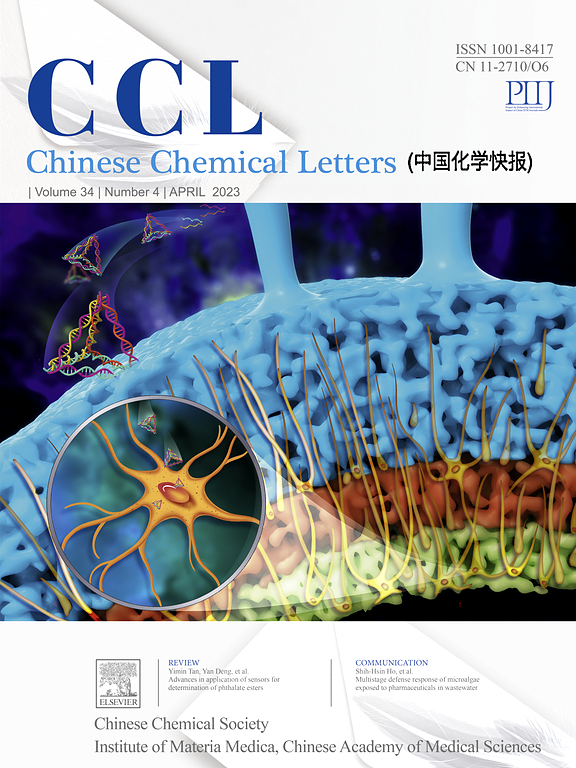Recent advances in directing group assisted transition metal catalyzed para-selective C-H functionalization
IF 9.4
1区 化学
Q1 CHEMISTRY, MULTIDISCIPLINARY
引用次数: 0
Abstract
The transition metal-catalyzed C![]() H activation have been considered as increasingly useful approach for installing new functional groups onto organic small molecules due to their high step- and atom-economy, the abundance of hydrocarbon compounds, and the potential for late-stage functionalization of complex organic molecules. The ortho- and meta-C-H activation and functionalization of aromatic compounds have been widely explored in recent years, however the distal para-C-H activation and functionalization has remained a significant challenge because of the difficulty in forming energetically favorable metallacyclic transition states. The utilization of appropriate directing groups or templates as well as the meticulous design of catalysts and ligands has proven to be effective in transition-metal-catalyzed remote para-C-H bonds activation and functionalization of aromatic compounds. This review aims to summarize the strategies for controlling para-selective C
H activation have been considered as increasingly useful approach for installing new functional groups onto organic small molecules due to their high step- and atom-economy, the abundance of hydrocarbon compounds, and the potential for late-stage functionalization of complex organic molecules. The ortho- and meta-C-H activation and functionalization of aromatic compounds have been widely explored in recent years, however the distal para-C-H activation and functionalization has remained a significant challenge because of the difficulty in forming energetically favorable metallacyclic transition states. The utilization of appropriate directing groups or templates as well as the meticulous design of catalysts and ligands has proven to be effective in transition-metal-catalyzed remote para-C-H bonds activation and functionalization of aromatic compounds. This review aims to summarize the strategies for controlling para-selective C![]() H functionalization using the directing group, template engineering, and catalyst/ligand design under transition metals catalysis in recent years.
H functionalization using the directing group, template engineering, and catalyst/ligand design under transition metals catalysis in recent years.

求助全文
约1分钟内获得全文
求助全文
来源期刊

Chinese Chemical Letters
化学-化学综合
CiteScore
14.10
自引率
15.40%
发文量
8969
审稿时长
1.6 months
期刊介绍:
Chinese Chemical Letters (CCL) (ISSN 1001-8417) was founded in July 1990. The journal publishes preliminary accounts in the whole field of chemistry, including inorganic chemistry, organic chemistry, analytical chemistry, physical chemistry, polymer chemistry, applied chemistry, etc.Chinese Chemical Letters does not accept articles previously published or scheduled to be published. To verify originality, your article may be checked by the originality detection service CrossCheck.
 求助内容:
求助内容: 应助结果提醒方式:
应助结果提醒方式:


